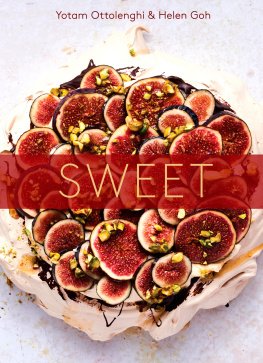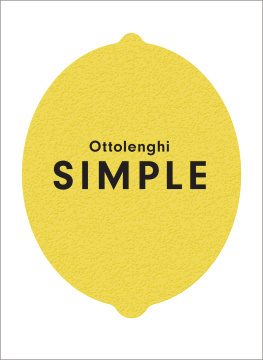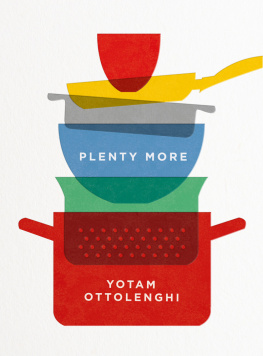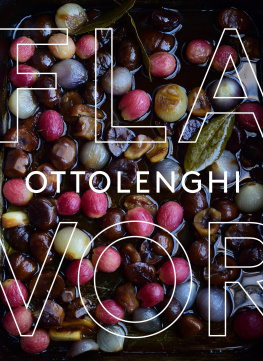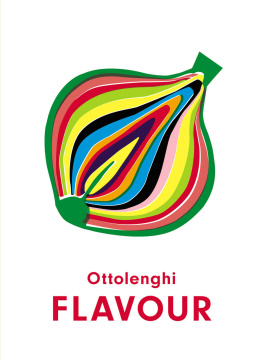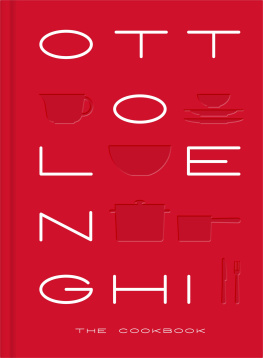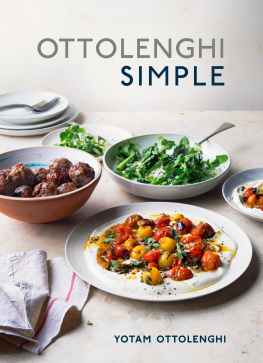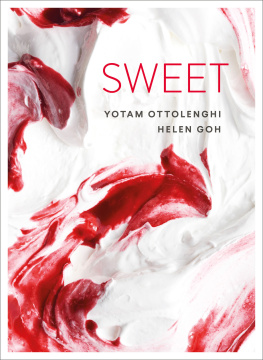Ottolenghi - Sweet
Here you can read online Ottolenghi - Sweet full text of the book (entire story) in english for free. Download pdf and epub, get meaning, cover and reviews about this ebook. year: 2017, publisher: Potter;TenSpeed;Harmony, genre: Home and family. Description of the work, (preface) as well as reviews are available. Best literature library LitArk.com created for fans of good reading and offers a wide selection of genres:
Romance novel
Science fiction
Adventure
Detective
Science
History
Home and family
Prose
Art
Politics
Computer
Non-fiction
Religion
Business
Children
Humor
Choose a favorite category and find really read worthwhile books. Enjoy immersion in the world of imagination, feel the emotions of the characters or learn something new for yourself, make an fascinating discovery.
- Book:Sweet
- Author:
- Publisher:Potter;TenSpeed;Harmony
- Genre:
- Year:2017
- Rating:5 / 5
- Favourites:Add to favourites
- Your mark:
- 100
- 1
- 2
- 3
- 4
- 5
Sweet: summary, description and annotation
We offer to read an annotation, description, summary or preface (depends on what the author of the book "Sweet" wrote himself). If you haven't found the necessary information about the book — write in the comments, we will try to find it.
Sweet — read online for free the complete book (whole text) full work
Below is the text of the book, divided by pages. System saving the place of the last page read, allows you to conveniently read the book "Sweet" online for free, without having to search again every time where you left off. Put a bookmark, and you can go to the page where you finished reading at any time.
Font size:
Interval:
Bookmark:
BAKERS TIPS & NOTES
Throughout the book there are lots of tips and notes alongside the recipes. Most are also here, for general ease of reference. Its not a comprehensive bakers bible; its the things we think are useful and interesting to know, or which need more explanation than a recipe has the space to give.
Bain-marie
We use a bain-mariea water bathwhen baking our Hot Chocolate and Lime Puddings (see ). Although a lot of people bake their cheesecakes set inside a water bath placed in the oventhe rationale being that because the temperature of the water cannot rise above 212F/100C, the cheesecake will cook evenlywe are not fans. For the recipes in which we do use the technique, take care when filling your baking pan with hot water. Place the pan in the oven before pouring the water in, rather than trying to lift and move a panful of water across the kitchen, which can be both messy and dangerous.
Butter
BURNING Burnt butteror beurre noisetteis the process by which butter is heated on the stove for so long that it starts to foam, turn a light brown color and smell nutty. Small brown specks of sediment will form on the side of the pan, which are then removed when the butter is strained in a fine-mesh sieve. The strained butterthe burnt butterbrings a nutty caramel note (as well as a golden brown color) to your baking. We use it in our Brown Butter Almond Tuiles (see ).
TEMPERATURE OF The temperature of butter when you start baking is always important. Sometimes it needs to be fridge-cold (if you are rubbing it into flour to form a crumb-like consistency for a dough, for example). Sometimes it needs to be at room temperature (if you want it to be malleable enough to be mixed with other ingredients until smooth, or if you want a batter to drop nicely and evenly into a cupcake mold). Sometimes you want it to be what we call soft but not oily. This is where it is softer than room temperature but not so soft as to be sitting in an oily puddle (as it would be if youd melted it for a few seconds in the microwave, for example), which would result in a dense cake. We get our butter to this point by placing it in a bowl close to the stove top while we are getting on with other bits and bobs in the kitchen. Cutting the butter into roughly 1-inch/3-cm cubes and spreading them out over the wrapper or on a plate will speed up the process further. Either way, keep an eye on it; if its no longer solid, then youve taken it too far.
When melting butter, we also cut it into cubes, so that it melts faster and more evenly; you dont want it to boil away and reduce.
Sometimes we say that butter should be melted and then cooled to room temperature before, say, being added to a mix with lots of eggs in it. This is to prevent the eggs being cooked by the heat of the butter.
All of the butter we start with is unsalted. This then allows us to control the amount of salt used in a recipe.
Chocolate
CALLETS/CHIPS VS. BLOCK In the shops and bakery, we use chocolate callets (or chips) in our baking. They come in a range of cocoa percentages and have the great advantage of melting evenly, which makes the chocolate less temperamental to work with. Callets or chips are available online, in chocolate shops and more generally in supermarkets, but for the ease of the home cook, we have started with blocks of chocolate that are then chopped by hand. How precise you need to be when breaking up or chopping the chocolate is indicated in each recipe. Precision will matter more in some cases than others. There are some instances where callets or chips are needed: in our Chocolate Chip and Pecan Cookies (see ), for example. If you started with a whole block of chocolate and cut it into uneven chunks, this would lead to an uneven bake.
MELTING When melting chocolate, avoid the temptation to stir it too often or too vigorously, as this will cause it to seize up. It will always stiffen up a bit if another hot liquid is added to ithot water or coffee, for example, in the flourless chocolate layer cake (see )but it will smooth out again with just a little bit of gentle stirring. If folding melted chocolate into another mixturewhisked egg yolks and sugar, for exampleyour melted chocolate should be slightly cooled (rather than completely cooled, which will make it too firm).
Sometimes we melt chocolate by pouring scalding milk or cream over chopped chunks of chocolate and only stirring it through once its been left to sit. To scald milk or cream, you heat it just up to the point before it starts boiling. Once there are one or two bubbles on the surface, remove it from the heat; if it actually comes to a proper boil, youve taken it too far and the chocolate will scorch or split.
TEMPERING When chocolate is melted and used as a coating or spread, it sometimes develops white streaks. These occur as a result of the chocolate melting and then cooling, and the cocoa butterthe fat naturally present in cocoa beans, which gives chocolate its irresistible mouth-feelsolidifying into fat crystals that all have different shapes and melting points. These white streaksknown as fat bloomcan give the chocolate a slightly dull appearance or gritty texture. The chocolate is perfectly edible, but it doesnt look great. If you want to prevent the formation of white streaks, you need to temper the chocolate. This is the process of carefully melting and cooling chocolate to ensure that the cocoa butter crystallizes properly.
There are several ways to temper chocolate, from elaborate mixing techniques with finely controlled temperatures to tempering machines that do all the work for you. The simplest way is to chop or shave the chocolate into small, even pieces, then remove about a quarter of the chocolate and set these pieces aside. Melt the remaining three-quarters of the chocolate in a bowl set over a pan of barely simmering water, making sure the base of the bowl is not touching the surface of the water. Remove the bowl from the simmering water and, when its off the heat, add the reserved pieces of chocolate. Stir through until melted and cooled.
You dont need to temper chocolate every time you work with it. We only temper it when the chocolate is going to be used and seen as a coating: in the Coconut Meringue Brittle (see ), if you like, but this again is optional, as the whole thing is covered in praline before being frozen.
This might all seem like a lot of information for a process you only use a few times, but we hope its interesting and useful, nevertheless!
CHOCOLATE (WHITE) White chocolate can be more temperamental than other chocolate when its being melted. If its heated too quickly, it will seize up. To prevent this, either start with callets (or chips), shave your block of chocolate into flakes, or simply make sure you chop your block of chocolate into even pieces. If uneven, the pieces will melt at different times and will seize up when stirred. When melting, do so over low heat, either in a heatproof bowl over a pan of gently simmering water or on a low temperature in a microwave.
Citrus fruit (peeling)
When shaving peel off citrus fruitlemons, limes, orangesalways avoid the white pith. This is bitter and can carry its bitterness through your baking (unless you are blanching the whole peel, see ).
Eggs
NUMBER OF The more eggs you have in a cake batter, the closer eye you need to keep on it toward the end of baking: a relatively large number of eggs means that a cake can go from being a little bit liquid in the middle to being cooked in just a few minutes. As ever, a skewer inserted into the center of the cake will give you a good indication as to whats going on inside.
SIZE AND TEMPERATURE OF Unless otherwise stated, we assume that eggs are large and at room temperature when you start baking. This is what our baking times are based on. For some recipes, though, the temperature of the eggs is not just important, its crucial. In the Hot Chocolate and Lime Puddings (see ), which contain a lot of eggs, if you start with fridge-cold eggs then the mix wont just split; it will lead to a cold, heavy batter that has to work harder to rise in the oven. If your eggs are in the fridge and you want to start baking straightaway, bring them to room temperature by placing them in a small bowl and covering with hot tap water (not boiling water) for 5 minutes before using.
Next pageFont size:
Interval:
Bookmark:
Similar books «Sweet»
Look at similar books to Sweet. We have selected literature similar in name and meaning in the hope of providing readers with more options to find new, interesting, not yet read works.
Discussion, reviews of the book Sweet and just readers' own opinions. Leave your comments, write what you think about the work, its meaning or the main characters. Specify what exactly you liked and what you didn't like, and why you think so.

